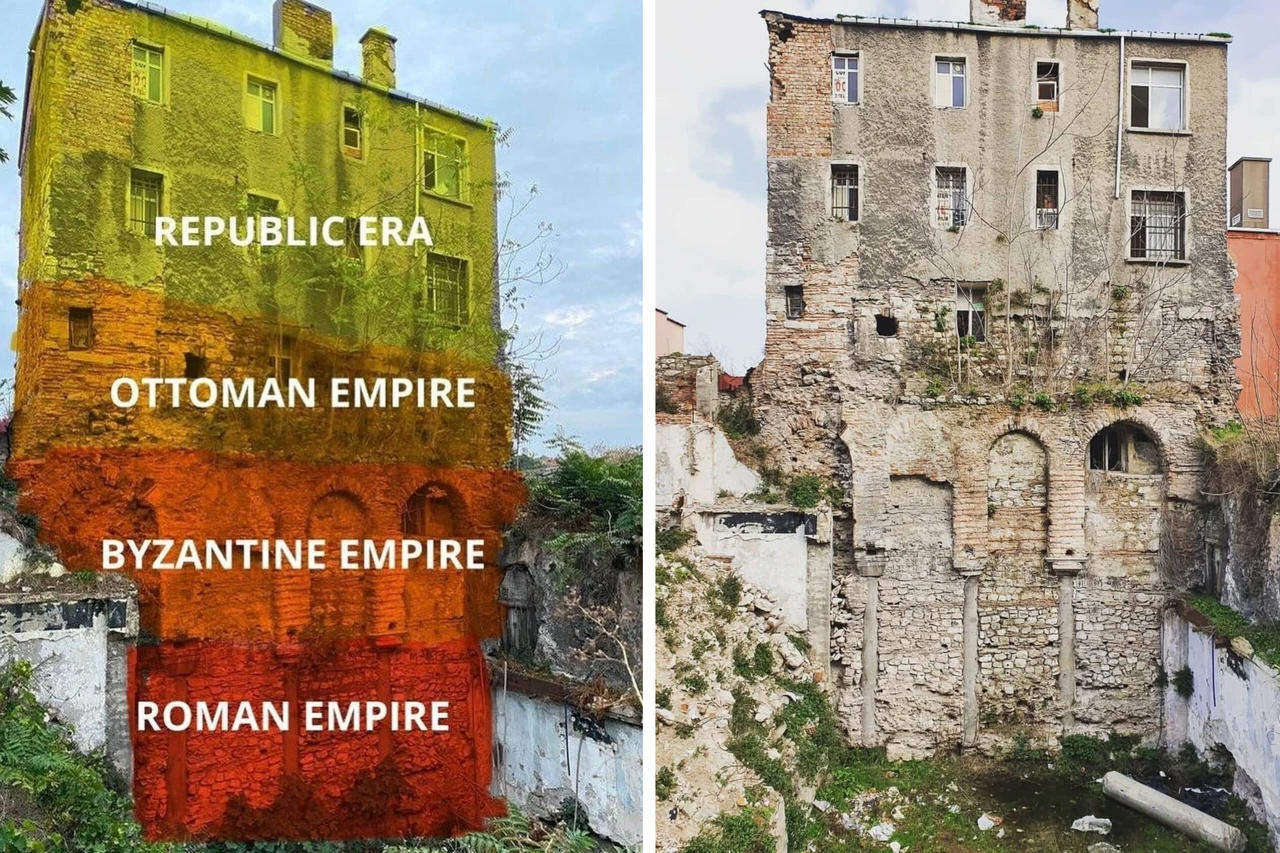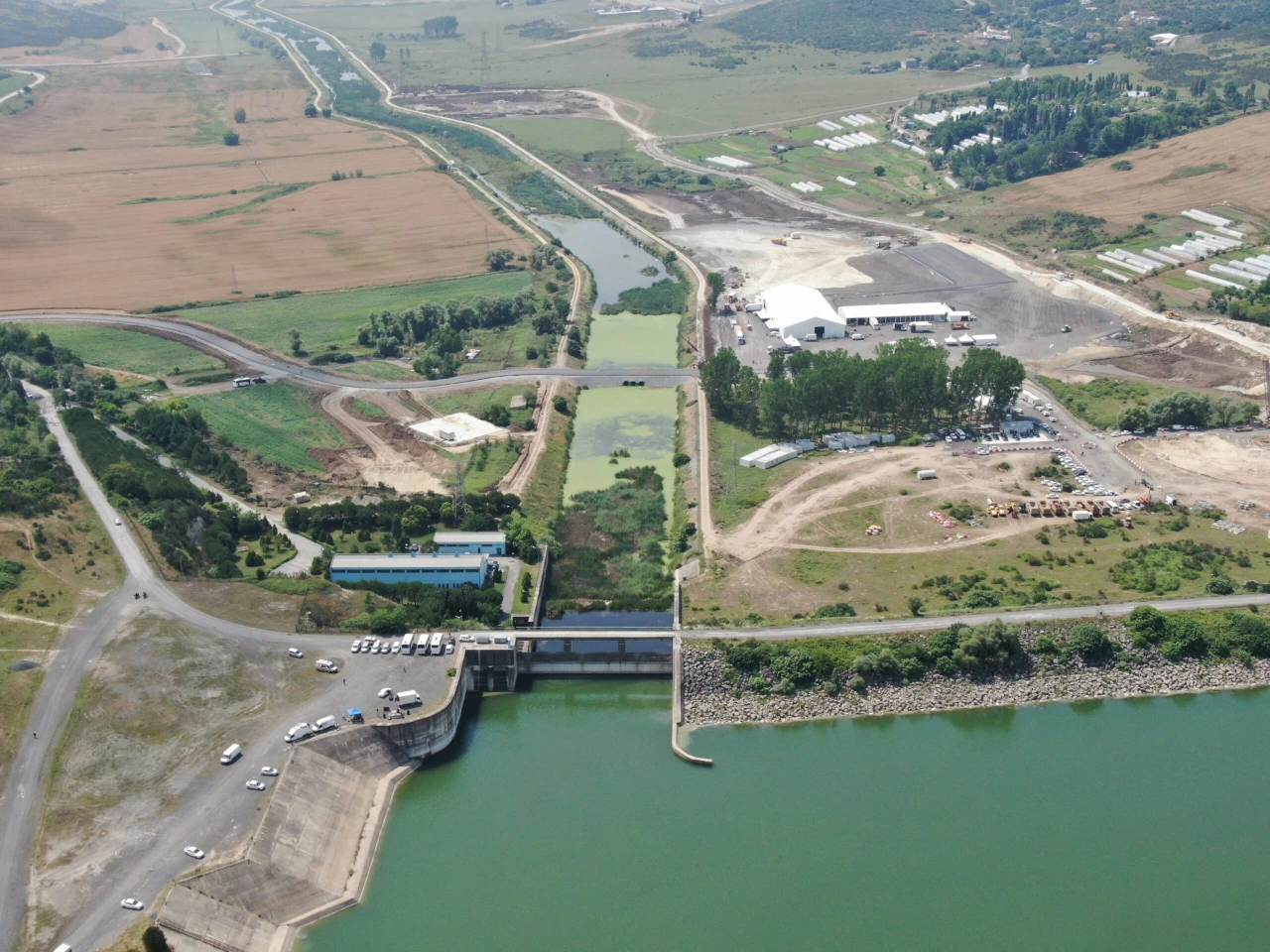Layers of history: Building in Istanbul reflects Roman, Byzantine, Ottoman eras
 Photos showcasing the building and the four historical periods it represents, Istanbul, Türkiye, June 11, 2024. (Photo via Instagram/@architectanddesign)
Photos showcasing the building and the four historical periods it represents, Istanbul, Türkiye, June 11, 2024. (Photo via Instagram/@architectanddesign)
A unique building located in Istanbul’s Fatih district has captured attention with its historical layers. Featuring elements from the Roman, Byzantine (Eastern Roman), and Ottoman Empires, as well as the Republic era, this four-story, 19-room structure demonstrates how different periods of history can come together under one roof. The building, which was put up for sale in 2019, has fascinated both history enthusiasts and casual observers.
In archaeology, such accumulated layers of life are often referred to as a “mound” or “hoyuk.” However, encountering them in the form of a building in the heart of Istanbul is an extraordinary sight.
Different eras layered on top of each other
Istanbul has always been a city where different historical layers have accumulated over time. Originally a part of the Roman Empire, and later the Byzantine (Eastern Roman) Empire, it saw various structures built and rebuilt over the centuries. This fascinating building reflects that process. At its lowest level lies a cistern from the Roman Empire, approximately 1,800 years old.
Over time, as the city’s elevation increased, the cistern became buried. During the Ottoman era, a new building was constructed on top, which also eventually got buried. The current structure, still standing today, was built during the Republic period. This unique layering of three empires and four distinct periods is a rare find in a single building.
Over 180 cisterns throughout Istanbul
It is known that Istanbul has around 180 open and closed cisterns. The area within the city walls, known as “sur ici,” has always been water-scarce since the city’s earliest days. The large number of cisterns is not just a result of the city being under siege but also due to the geographical lack of natural water sources. Therefore, various water channels were built, and cisterns were installed across the city to collect rainwater. The area where this unique building stands was a trade center during the Roman and Byzantine periods, close to the Grand Bazaar.
The cistern was likely constructed to meet the needs of the merchants in the vicinity. Numerous cisterns, both large and small, have been discovered across the city, but this particular one was forgotten over time. Today, it survives through layers of history, providing a glimpse into Istanbul’s fascinating past.
This unique building in Istanbul’s Fatih district serves as a fascinating testament to the city’s layered history. With elements from the Roman, Byzantine, and Ottoman Empires, as well as the Republic era, it represents the continuous evolution of a city that has been a cultural and trade hub for centuries. The discovery of structures like these, especially the forgotten cisterns, offers a glimpse into how ancient civilizations adapted to the city’s challenges, showcasing the ingenuity and resilience of its people through time.



